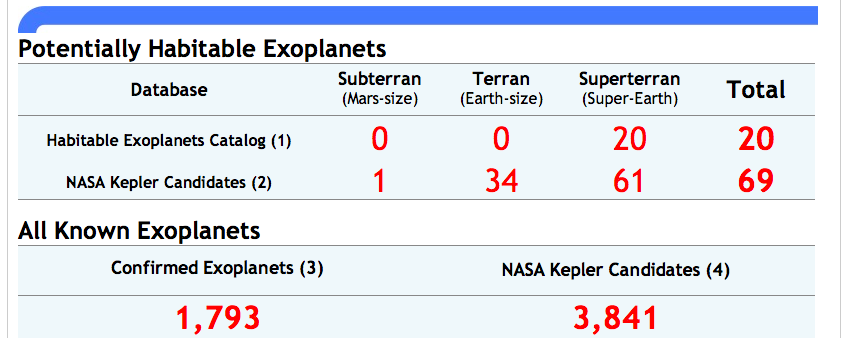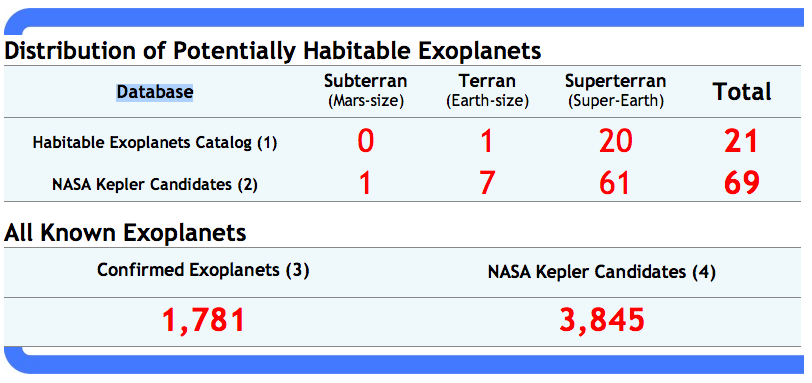It looks like you're using an Ad Blocker.
Please white-list or disable AboveTopSecret.com in your ad-blocking tool.
Thank you.
Some features of ATS will be disabled while you continue to use an ad-blocker.
share:

UW in the house! Go Dawgs!
First Earth Analog Discovered and Confirmed by Kepler.
www.nasa.gov...
More to follow.....
edit on 17-4-2014 by JadeStar because: (no reason given)
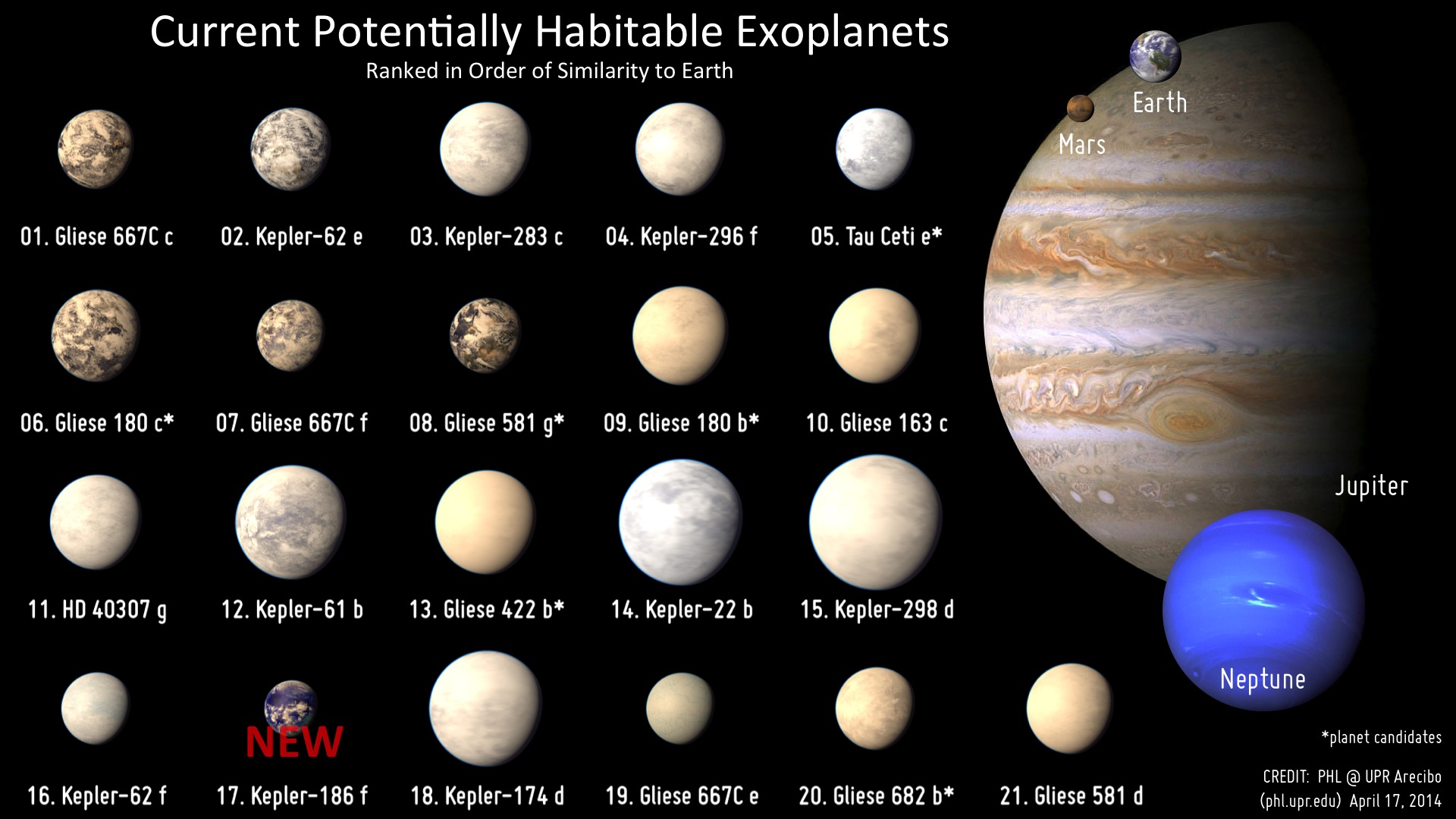
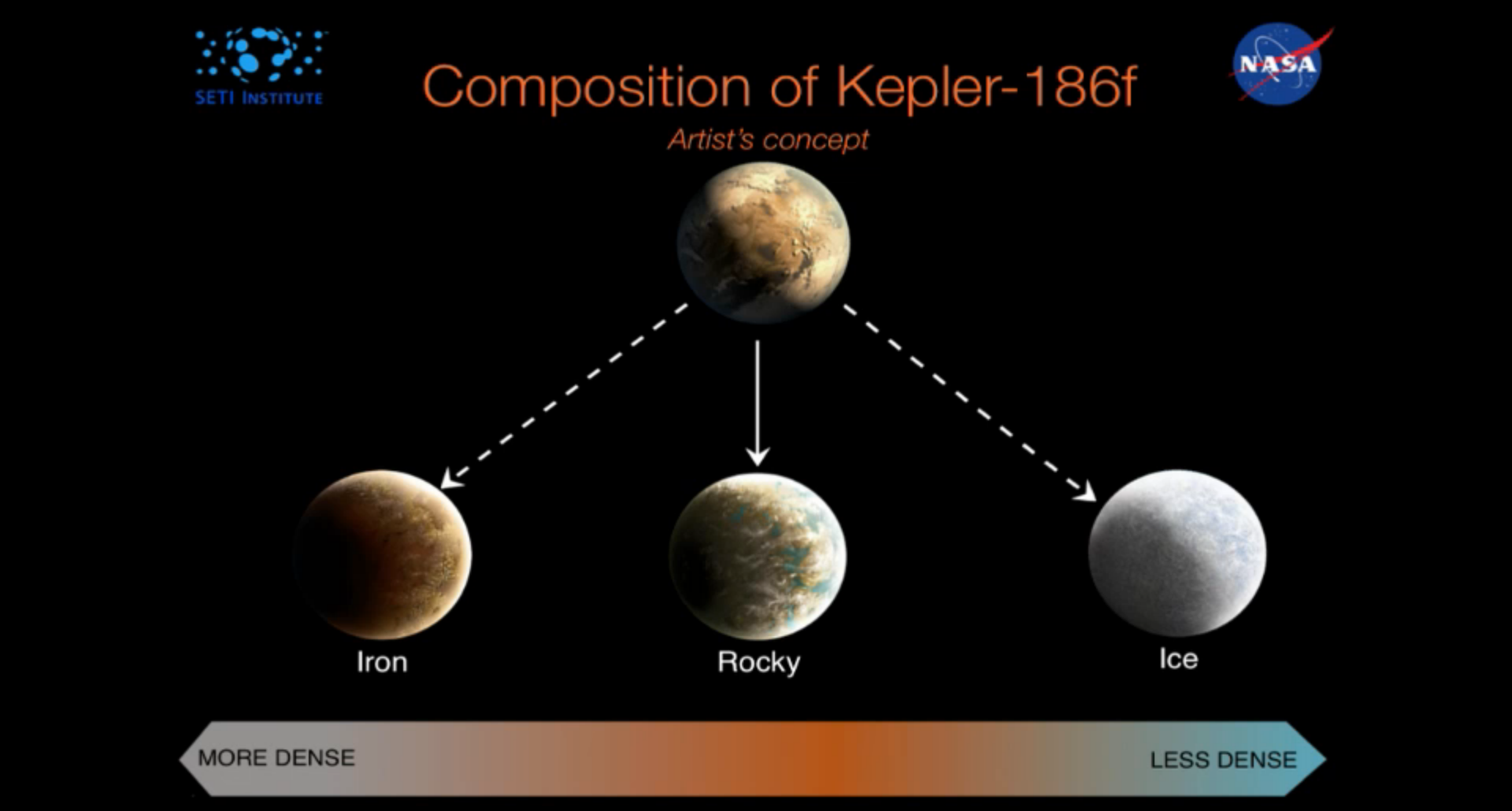
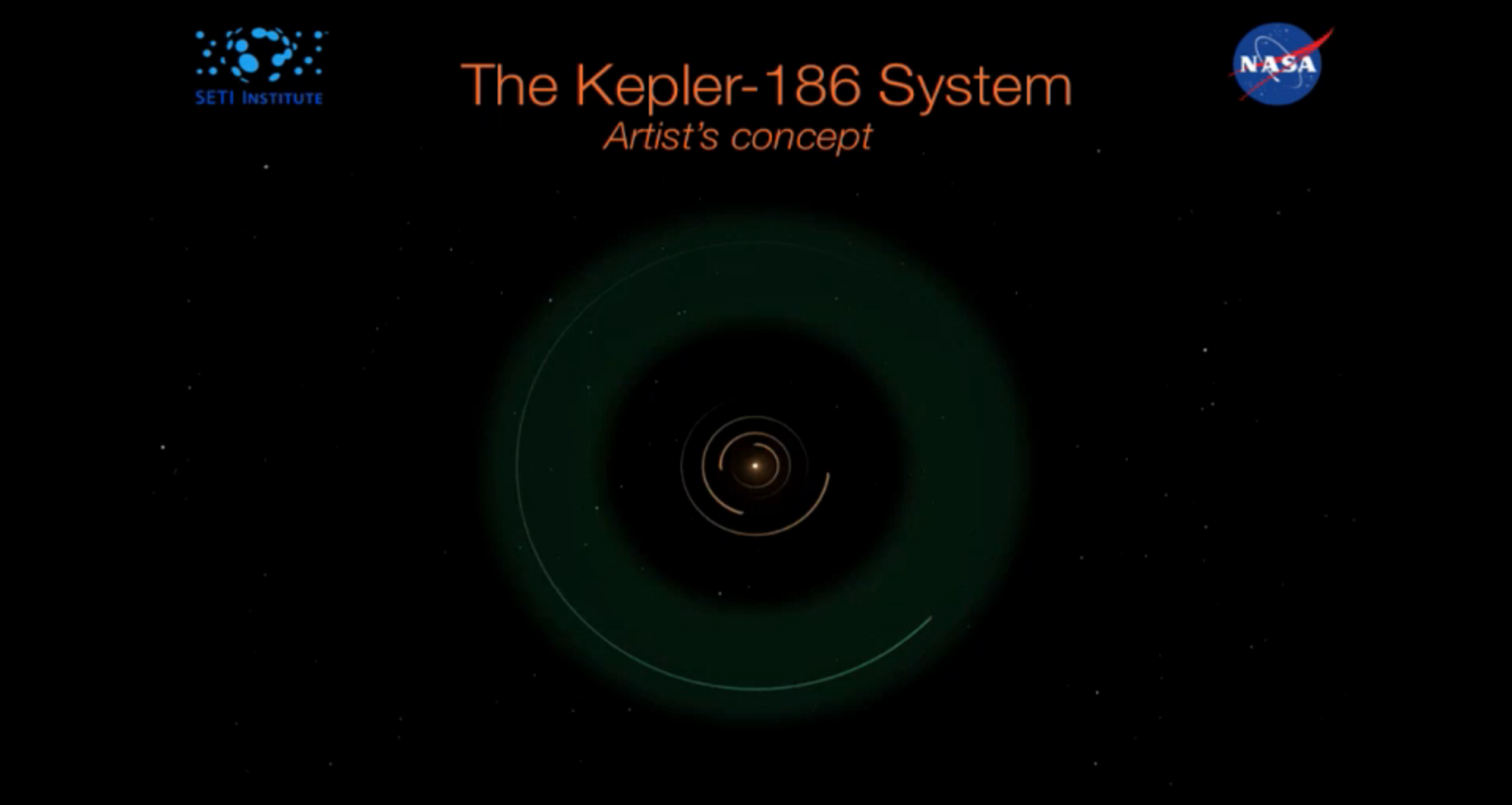
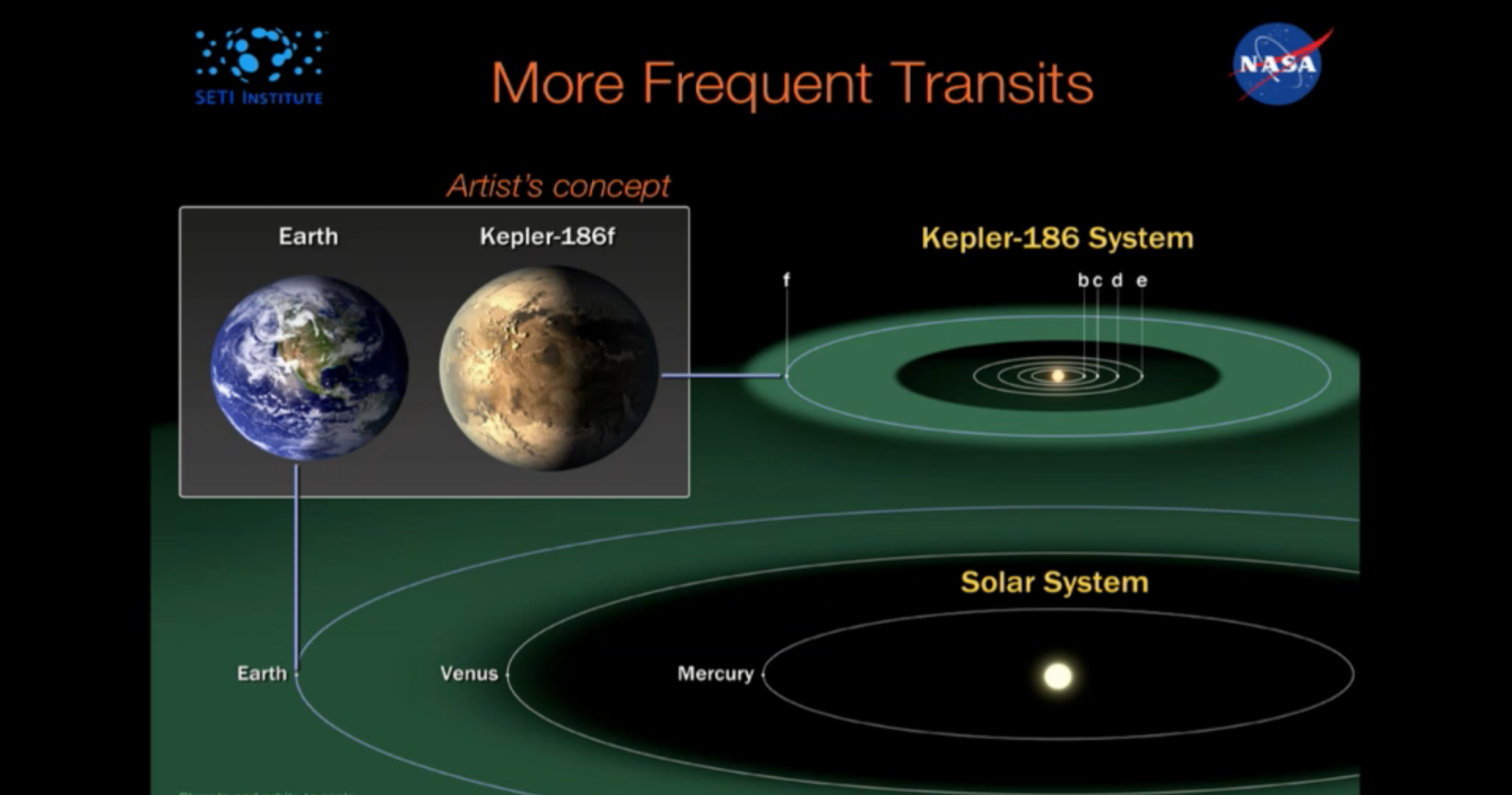
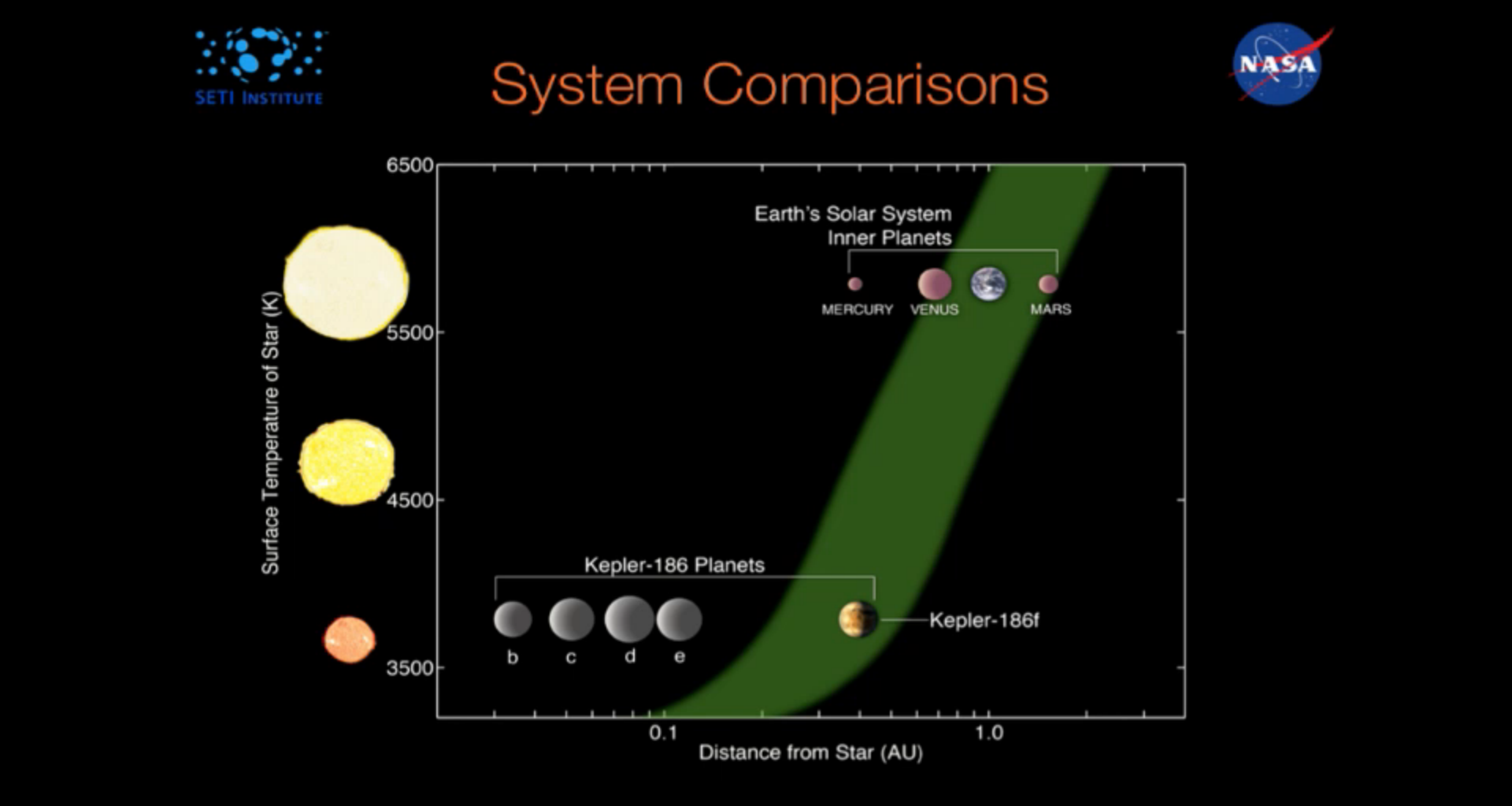
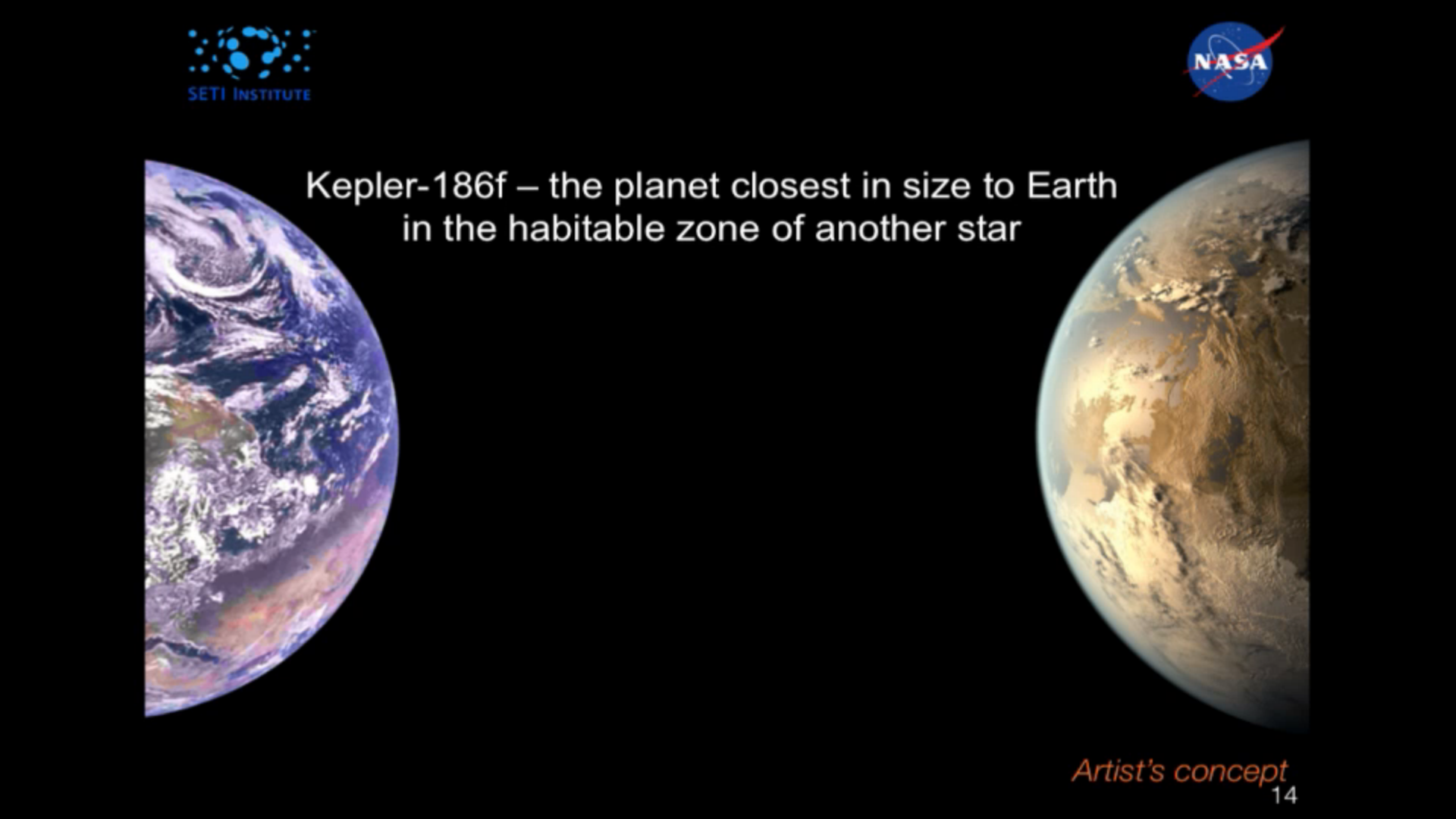
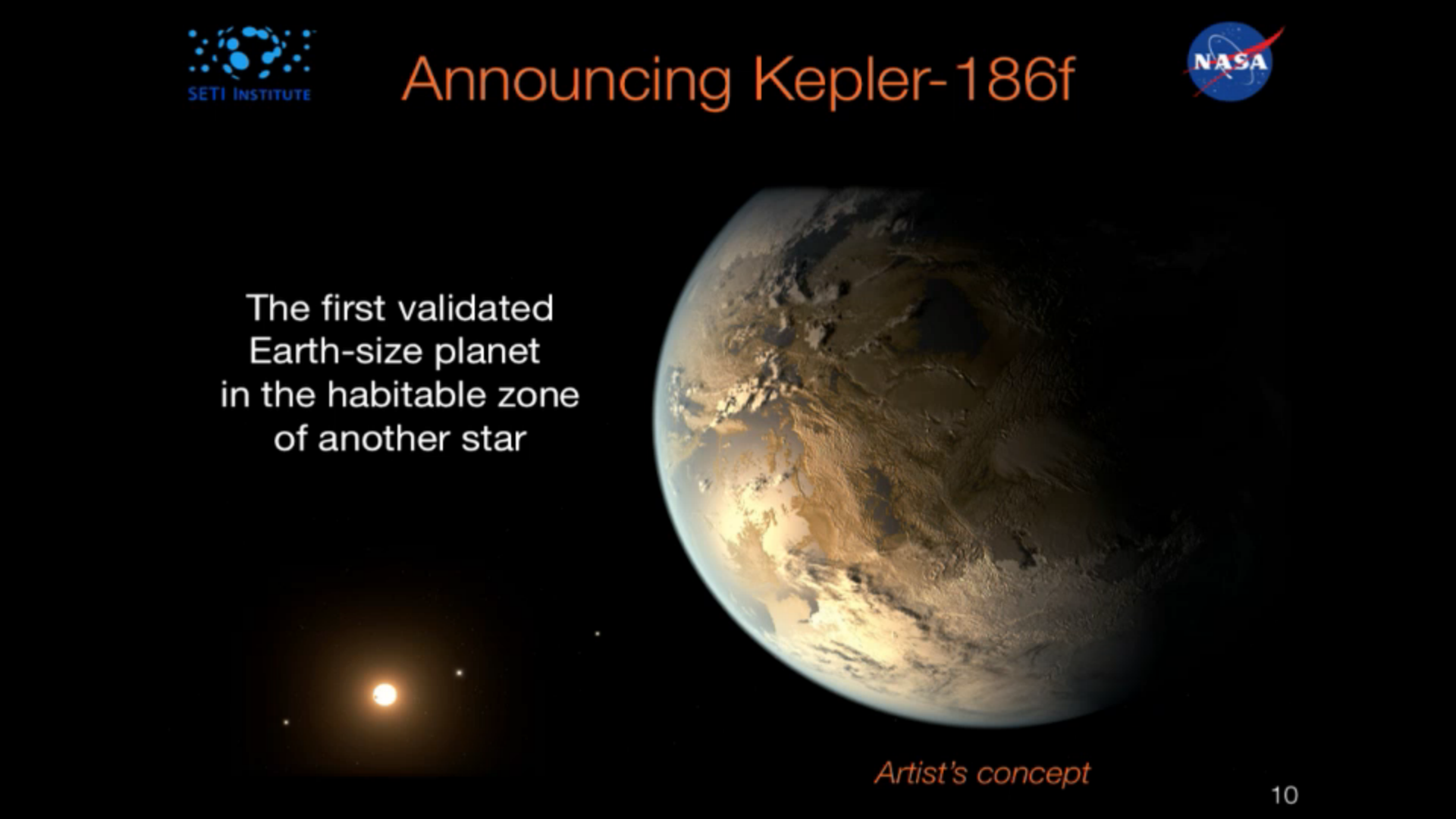

edit on 17-4-2014 by JadeStar because: (no reason given)
edit on 17-4-2014 by JadeStar because: (no
reason given)
Wow!! And only 500-light years from us. THAT could be very significant. So much for 'we are all alone'. No way.
This is so cool.
This is exciting! S/F
This is so cool.
Although the size of Kepler-186f is known, its mass and composition are not. Previous research, however, suggests that a planet the size of Kepler-186f is likely to be rocky.
"We know of just one planet where life exists -- Earth. When we search for life outside our solar system we focus on finding planets with characteristics that mimic that of Earth," said Elisa Quintana, research scientist at the SETI Institute at NASA's Ames Research Center in Moffett Field, Calif., and lead author of the paper published today in the journal Science. "Finding a habitable zone planet comparable to Earth in size is a major step forward."
Kepler-186f resides in the Kepler-186 system, about 500 light-years from Earth in the constellation Cygnus. The system is also home to four companion planets, which orbit a star half the size and mass of our sun. The star is classified as an M dwarf, or red dwarf, a class of stars that makes up 70 percent of the stars in the Milky Way galaxy.
"M dwarfs are the most numerous stars," said Quintana. "The first signs of other life in the galaxy may well come from planets orbiting an M dwarf."
This is exciting! S/F
reply to post by JadeStar
Very cool... be before we get too excited, we have to remember that being in a habitable zone is only one thing in a loooong laundry list of requirements for life... as we know it.
Very cool... be before we get too excited, we have to remember that being in a habitable zone is only one thing in a loooong laundry list of requirements for life... as we know it.
"habitable zone" -- the range of distance from a star where liquid water might pool on the surface of an orbiting planet
edit on 17-4-2014 by VegHead because: (no reason given)
I've got family there. It's kind of a hassle when it's their turn to host Thanksgiving.
Im sure the universe is teeming with life at various stages of technological advancement.
Our neighbour/s are much more advance than us and they know about us and have been/are visitors.
Welcome to the Universe and its inhabitants!
Our neighbour/s are much more advance than us and they know about us and have been/are visitors.
Welcome to the Universe and its inhabitants!
The telescope is so good, they actually have a close-up of the planet's surface!
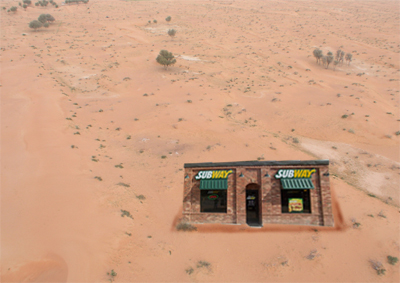

VegHead
reply to post by JadeStar
Very cool... be before we get too excited, we have to remember that being in a habitable zone is only one thing in a loooong laundry list of requirements for life... as we know it.
"habitable zone" -- the range of distance from a star where liquid water might pool on the surface of an orbiting planet
edit on 17-4-2014 by VegHead because: (no reason given)
Correct. But until today there was only 1 Earth sized planet known in a habitable zone. Our own.
Has the thought ever occurred to anybody else that we 'The Earth' may have already been spotted in our 'goldielocks zone' by others a long time ago? I
mean, if we with our meager 21st Century Tech can do it why couldn't other even more advanced Civilizations have spotted us in ours?
edit on
17-4-2014 by SLAYER69 because: (no reason given)
Here is how we will learn more about planets like Kepler 186f
reply to post by SLAYER69
Hello.
I'm thinking that just about everyone on ATS who pays any attention to space exploration/UFO/alien theories would already have figured that out. That's what's so exciting about it, I think.
But...yes. I'm sure we aren't "alone" - preposterous to think so.
Has the thought ever occurred to anybody else that we 'The Earth' may have already been spotted in our 'goldielocks zone' by others a long time ago? - See more at: www.abovetopsecret.com...
Hello.
I'm thinking that just about everyone on ATS who pays any attention to space exploration/UFO/alien theories would already have figured that out. That's what's so exciting about it, I think.
But...yes. I'm sure we aren't "alone" - preposterous to think so.
BuzzyWigs
reply to post by cestrup
LOL!
(What do they look like? )
Haven't seen them in a while but my guess is a little older than last time.
reply to post by JadeStar
Very cool! We are getting closer and closer to those golden facts and figures we need to have to prove life is not isolated upon Earth.
While its a given we are not alone in the universe. Science has a strict set of rules for having its numbers and measurements in order before we proclaim something as a Golden Fact, or law of our known understanding of this universe.
Up till now, we did not have the facts and figures, the measurements taken by the higher minds of this planet to show we are not the only planet in the universe that shows signature resemblances to our own planet.
It won't be long now. We are reaching the tipping point for our minds, and how we see the universe.
Very cool! We are getting closer and closer to those golden facts and figures we need to have to prove life is not isolated upon Earth.
While its a given we are not alone in the universe. Science has a strict set of rules for having its numbers and measurements in order before we proclaim something as a Golden Fact, or law of our known understanding of this universe.
Up till now, we did not have the facts and figures, the measurements taken by the higher minds of this planet to show we are not the only planet in the universe that shows signature resemblances to our own planet.
It won't be long now. We are reaching the tipping point for our minds, and how we see the universe.
They just confirmed this planet was in the big batch of 700 planets they confirmed before (when it was rumored they'd announce it earlier this year).
I had kinda jumped the gun with that post but they confirmed on the conference call that this planet was indeed in that batch. It was just held back
for announcement until today because they wanted to be sure.
They also just confirmed SETI will be looking at Kepler 186f across the full spectrum they can.
From the Planetary Habitability Lab at Arecibo:
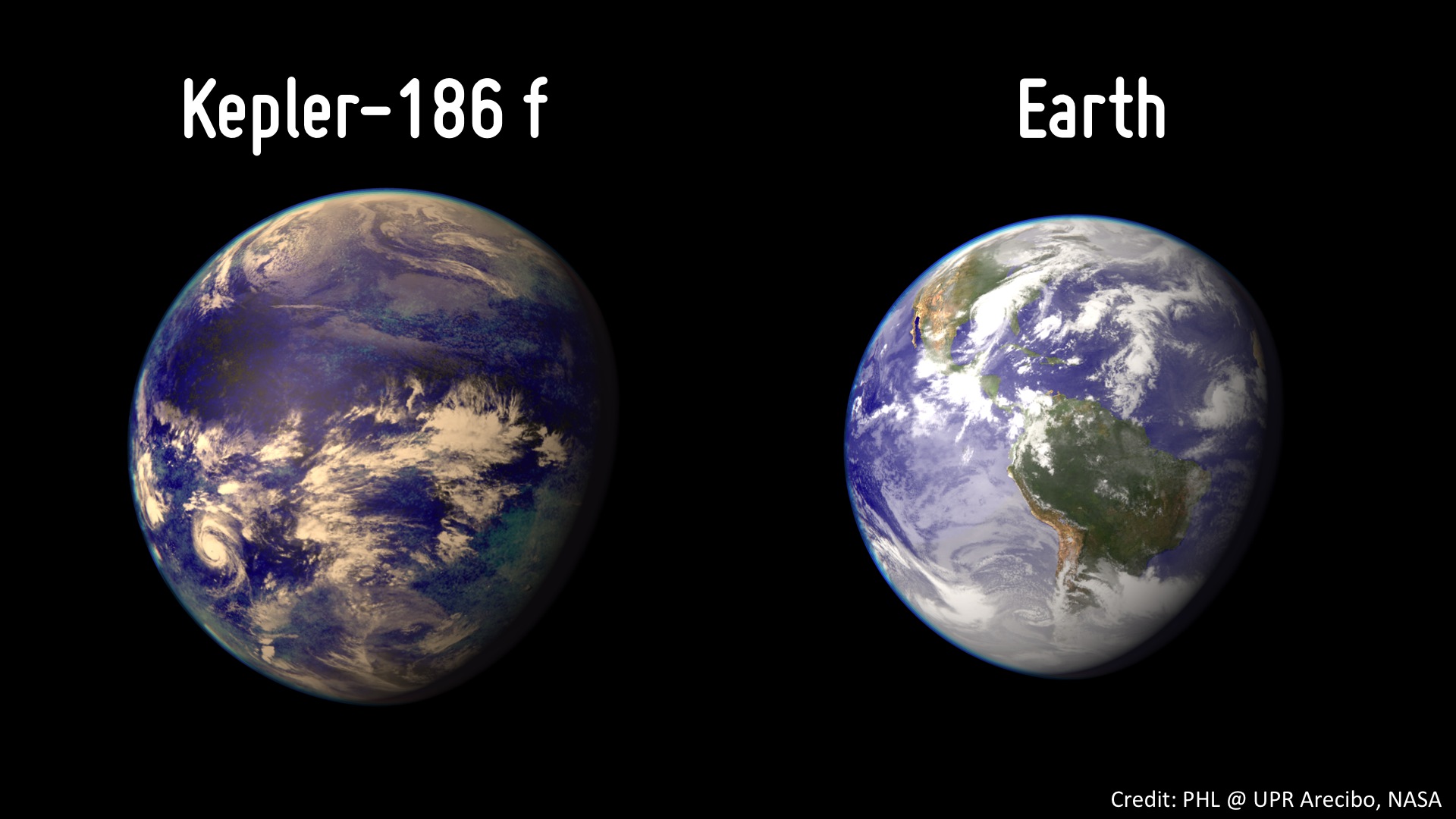
Sunsets:
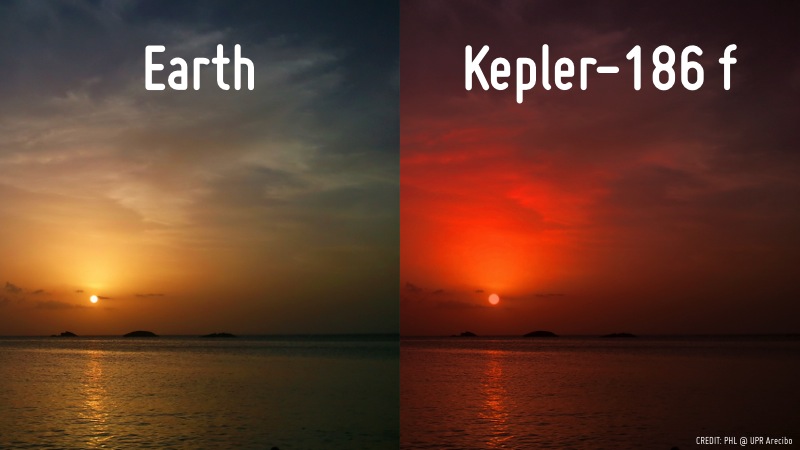
It has been estimated prior to today's announcement that the closest habitable planet to the Earth in terms of distance would be between 6 and 10 light years.
This was due to the Kepler findings prior to today.
After today this estimate is pretty much confirmed as very likely.
Our nearest neighbor like Earth is likely less than 10 light years away based on M-Dwarf distribution:

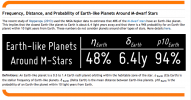
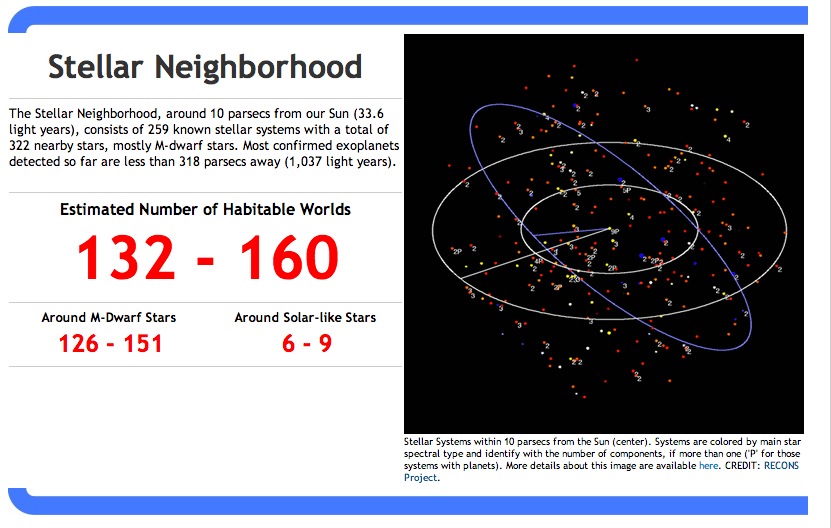
They also just confirmed SETI will be looking at Kepler 186f across the full spectrum they can.
From the Planetary Habitability Lab at Arecibo:

Sunsets:

It has been estimated prior to today's announcement that the closest habitable planet to the Earth in terms of distance would be between 6 and 10 light years.
This was due to the Kepler findings prior to today.
After today this estimate is pretty much confirmed as very likely.
Our nearest neighbor like Earth is likely less than 10 light years away based on M-Dwarf distribution:



edit on 17-4-2014 by JadeStar because: (no reason given)
reply to post by JadeStar
Thanks Jade, cutting the cake and uncorking the champagne. A new semi-Earth has arrived intact.
I only have a minute to look at this now, but will check out the thread, the images, and the links later. Very good to "see" you around again, and with such interesting news (my present avatar is a playful Mars rock).
Thanks Jade, cutting the cake and uncorking the champagne. A new semi-Earth has arrived intact.
I only have a minute to look at this now, but will check out the thread, the images, and the links later. Very good to "see" you around again, and with such interesting news (my present avatar is a playful Mars rock).
Aleister
reply to post by JadeStar
Thanks Jade, cutting the cake and uncorking the champagne. A new semi-Earth has arrived intact.
I only have a minute to look at this now, but will check out the thread, the images, and the links later. Very good to "see" you around again, and with such interesting news (my present avatar is a playful Mars rock).
This is likely a historic day for the planet we live on. What was once the domain of philosophers is now the reality of astronomy.
For those who are so inclined here is the actual paper on this discovery.
Also at 6pm Eastern/3pm Pacific the SETI Institute is hosting a Google Hangout about this discovery where you can ask questions here.
edit on 17-4-2014 by JadeStar because: (no reason given)
This is very exciting news Besides mass and size, we don't know what the atmosphere is made of and if it has water in it right?
Being in the habitable zone of a star makes it very likely the planet is rocky with liquid water right?
s&f, thanks for sharing
Being in the habitable zone of a star makes it very likely the planet is rocky with liquid water right?
s&f, thanks for sharing
new topics
-
Little Johnny and Larry should team up
General Chit Chat: 5 hours ago -
Will Us use alien technology to fight in ww3?
World War Three: 6 hours ago -
posted in wrong forum
Aliens and UFOs: 6 hours ago
top topics
-
Elon Says It’s ‘Likely’ He Buys Tanking MSNBC
Political Ideology: 14 hours ago, 16 flags -
Jaguar Rebrand Video Causes "WTF?" Moment - Seriously Weird
Automotive Discussion: 17 hours ago, 15 flags -
Montelukast affects brain, caused 5 year old to attempt suicide
Medical Issues & Conspiracies: 15 hours ago, 15 flags -
Shane Gillis commercial
Jokes, Puns, & Pranks: 12 hours ago, 4 flags -
Little Johnny and Larry should team up
General Chit Chat: 5 hours ago, 4 flags -
posted in wrong forum
Aliens and UFOs: 6 hours ago, 0 flags -
Will Us use alien technology to fight in ww3?
World War Three: 6 hours ago, 0 flags
active topics
-
Biden's "Reckless" Decision To Escalate Russia-Ukraine War
World War Three • 123 • : BedevereTheWise -
Elon Says It’s ‘Likely’ He Buys Tanking MSNBC
Political Ideology • 74 • : andy06shake -
Montelukast affects brain, caused 5 year old to attempt suicide
Medical Issues & Conspiracies • 10 • : DeadlyStaringFrog -
Jaguar Rebrand Video Causes "WTF?" Moment - Seriously Weird
Automotive Discussion • 21 • : Athetos -
Well we know Putins ICBMs won't fail in their silos
World War Three • 176 • : andy06shake -
Will Us use alien technology to fight in ww3?
World War Three • 3 • : Athetos -
Well, here we go red lines crossed Biden gives the go ahead to use long range missiles
World War Three • 329 • : Imhere -
International Criminal Court Issues Arrest Warrant For Netanyahu
Mainstream News • 44 • : JJproductions -
Why isn't Psychiatry involved?
Social Issues and Civil Unrest • 12 • : tamusan -
What Joe Rogan said Vs The View
Dissecting Disinformation • 22 • : TheMisguidedAngel

